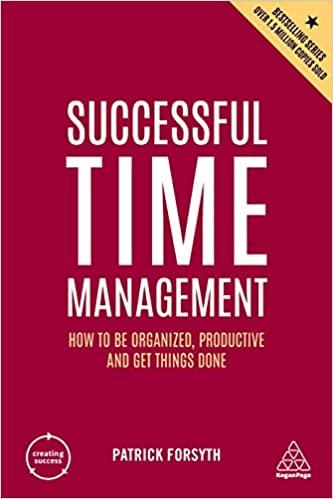Question
OPERATION MANAGEMENT 1. **Capacity Planning** What does capacity planning primarily involve? A. Forecasting sales B. Determining the maximum output possible C. Allocating resources D. Setting
OPERATION MANAGEMENT
1. **Capacity Planning** What does capacity planning primarily involve? A. Forecasting sales B. Determining the maximum output possible C. Allocating resources D. Setting production schedules
2. **Inventory Management** Just-In-Time (JIT) inventory system aims to: A. Increase inventory levels B. Reduce lead times C. Minimize inventory holding costs D. Maximize warehouse space
3. **Quality Management** Which of the following is a principle of Total Quality Management (TQM)? A. Cost reduction B. Employee involvement C. Mass production D. Centralized decision-making
4. **Supply Chain Management** The bullwhip effect in supply chain management refers to: A. Increased transportation costs B. Variations in supply leading to inefficiencies C. Outsourcing of supply chain functions D. Improved supplier relationships
5. **Lean Management** The primary goal of lean management is to: A. Increase product variety B. Reduce waste C. Maximize profits D. Increase employee headcount
6. **Process Design** Process mapping is used to: A. Evaluate employee performance B. Identify bottlenecks in production C. Set prices for products D. Recruit skilled workers
7. **Project Management** The critical path in a project management network diagram represents: A. The most expensive tasks B. The shortest time to complete the project C. The sequence of tasks that determines the project duration D. The least important tasks
8. **Facility Layout** Which layout is most suitable for mass production? A. Process layout B. Product layout C. Fixed-position layout D. Cellular layout
9. **Forecasting** Which method is commonly used for short-term demand forecasting? A. Exponential smoothing B. Econometric modeling C. Delphi method D. Regression analysis
10. **Operations Strategy** Operations strategy should align with: A. Only financial objectives B. Only marketing strategies C. Corporate strategy D. Only human resource policies
11. **Workforce Management** Cross-training of employees is beneficial for: A. Specialization B. Flexibility in task assignment C. Increasing employee wages D. Reducing team collaboration
12. **Sustainable Operations** An example of sustainable operations is: A. Increasing energy consumption B. Reducing waste C. Ignoring environmental regulations D. Focusing only on profit maximization
13. **Process Improvement** Kaizen is a strategy focused on: A. Massive overhauls B. Continuous improvement C. Decreasing product quality D. Reducing customer satisfaction
14. **Service Operations** In service operations, the moment of truth refers to: A. The start of a business day B. The time when a service is delivered to the customer C. End of a fiscal year D. When inventory is counted
15. **Outsourcing** The primary reason for outsourcing operations is to: A. Increase internal bureaucracy B. Reduce costs C. Complicate supply chains D. Decrease efficiency
16. **Technology in Operations** The use of robotics in manufacturing primarily aims to: A. Increase manual labor B. Decrease production speed C. Improve precision and efficiency D. Compromise product quality
17. **Risk Management** Business Continuity Planning (BCP) is essential for: A. Ignoring potential risks B. Dealing with unexpected disruptions C. Avoiding investment in technology D. Reducing employee training
18. **Performance Measurement** Key Performance Indicators (KPIs) in operations management are used to: A. Punish underperforming employees B. Track and measure operational efficiency C. Ignore customer feedback D. Focus solely on financial metrics
19. **Ethics in Operations** Ethical operations management primarily focuses on: A. Ignoring labor laws B. Maximizing environmental harm C. Fair treatment of workers and responsible sourcing D. Solely focusing on profit
20. **Global Operations** The main challenge in global operations management is: A. Reducing diversity B. Dealing with cultural differences C. Avoiding technology use D. Focusing on local markets only
Step by Step Solution
There are 3 Steps involved in it
Step: 1

Get Instant Access to Expert-Tailored Solutions
See step-by-step solutions with expert insights and AI powered tools for academic success
Step: 2

Step: 3

Ace Your Homework with AI
Get the answers you need in no time with our AI-driven, step-by-step assistance
Get Started


